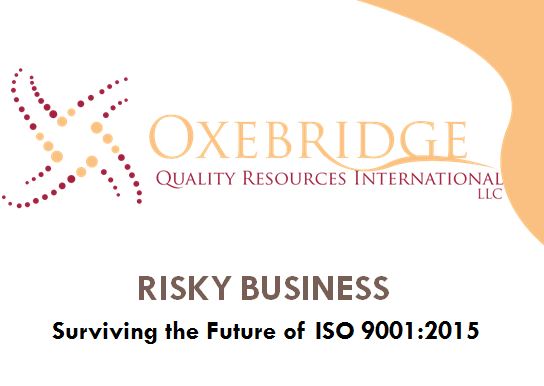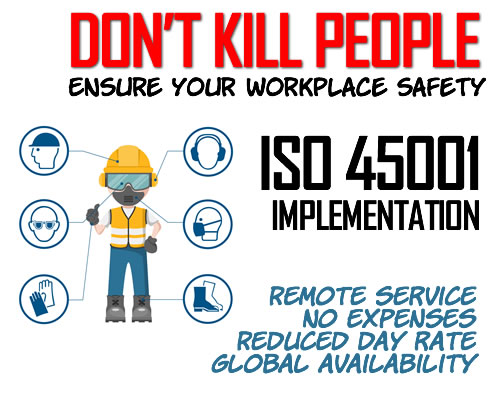Yesterday I have my Risky Business: Surviving the Future of ISO 9001:2015 presentation to ASQ Huntsville AL. I’ve given this a few times, in the US to a handful of private clients, and in Lima Peru to a seminar of Peruvian business owners and standards professionals. Each time the reactions are a bit different, and worth looking at.
Lima, Peru
In Lima, despite the fact that the venue was much larger, the responses were more muted. An official TC 176 representative for Peru was polite, but clearly had issues with the idea that merely voting on material written by someone else doesn’t actually constitute “consensus development,” a point I make in the presentation. Another fellow asked, incredulously, how the Ministry of Justice could be ISO 9001 certified in such a corrupt government. (I didn’t have an answer, other than to say, “don’t question the guys with guns.”) The biggest takeaway from the Lima event, however, was that the service sector is frustrated with ISO 9001’s inability to address them properly, and the struggle they have interpreting manufacturing-biased requirements in a service sector environment. They felt the new standard would do nothing to fix this problem, and I got the most enthusiastic round of applause when I mentioned that ISO should consider splitting 9001 into a two standards, with one for service providers.
Huntsville AL
In Huntsville, the responses were different. In general, there seemed to be frustration over the development process and how ISO is breaking its rules to get the standard out on time, but at the same time the audience appeared to appreciate that the 9001:2015 version won’t be a huge departure from the current 2008 version. One attendee asked if ISO had any inclination to adopt the PEAR form used in AS9100, and I said not that I know of, and that I would work to defeat it. I was met with a lot of smiles. When I asked how many of the AS9100 folks in teh room had been forced to fill out PEARs for their auditors, a lot of hands shot up, and no one was happy about it. They were clear and unified in hoping the PEAR would disappear soon, even if that’s unlikely under the current AAQG leadership. But I do believe it’s unlikely to infect the ISO world, and they were satisfied with that.
There was general agreement that while risk shouldn’t be much of a hurdle, and it should improve QMS effectiveness, its rollout will be problematic. But in all honesty. I felt I had more concern over this than the audience did. They may know better than me.
“Human factors” being injected into ISO 9001 was a top concern, along with the nebulous “knowledge management.”
A lot of other questions were related to how to approach the new ISO 9001 if one is already locked into a current, simultaneous AS9100 or AS9120 program, and if that would require making parallel, multiple management systems just to satisfy these various versions and approaches. I suggested a simple compliance matrix to point from company approaches to teh applicable clauses of each standard. Until AS and other standards align with the new ISO 9001 HLS, this will be a problem.
Another source of concern was the CD’s current language which seems to confuse simple product nonconformities with full-blown corrective actions, but I advised them that the language may be fixed in the upcoming DIS.
Overall, in both presentations, there seemed to be a sense that ISO was tinkering for tinkering’s sake, without improving anything in a significant way, but making minor changes that would force massive burdens on users who try to update their systems. A rep from large aerospace company said it would probably be impossible to make the 2018 deadline for compliance to 9001:2015 because such large companies implement change so slowly.
Conclusions?
So, in conclusion, it’s been a mixed bag of viewpoints: a general appreciation for the fact that it’s not a major change, but tempered with some very serious concerns over the minor changes that were made. And a general frustration with the development process itself.
I’m due to do a few more of these, so will see if additional viewpoints arise.
Thanks to the ASQ 1503 Section in Huntsville AL for a great event.
Christopher Paris is the founder and VP Operations of Oxebridge. He has over 35 years’ experience implementing ISO 9001 and AS9100 systems, and helps establish certification and accreditation bodies with the ISO 17000 series. He is a vocal advocate for the development and use of standards from the point of view of actual users. He is the writer and artist of THE AUDITOR comic strip, and is currently writing the DR. CUBA pulp novel series. Visit www.drcuba.world








